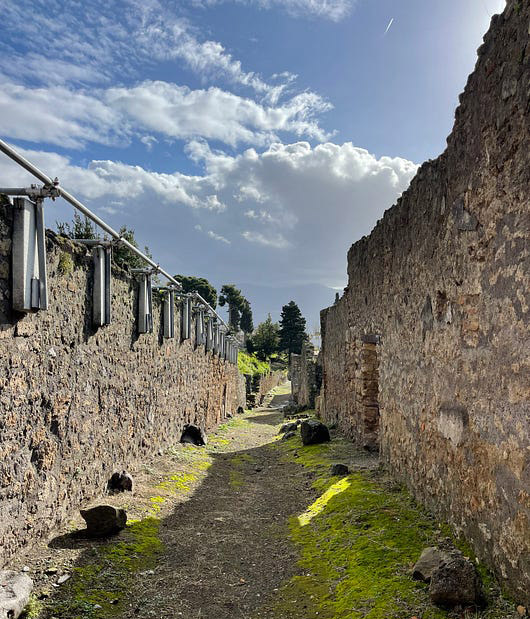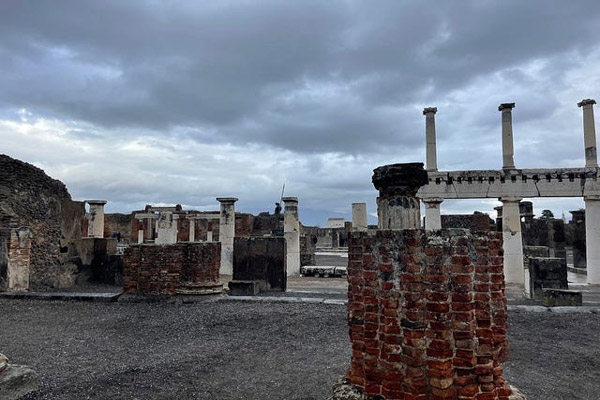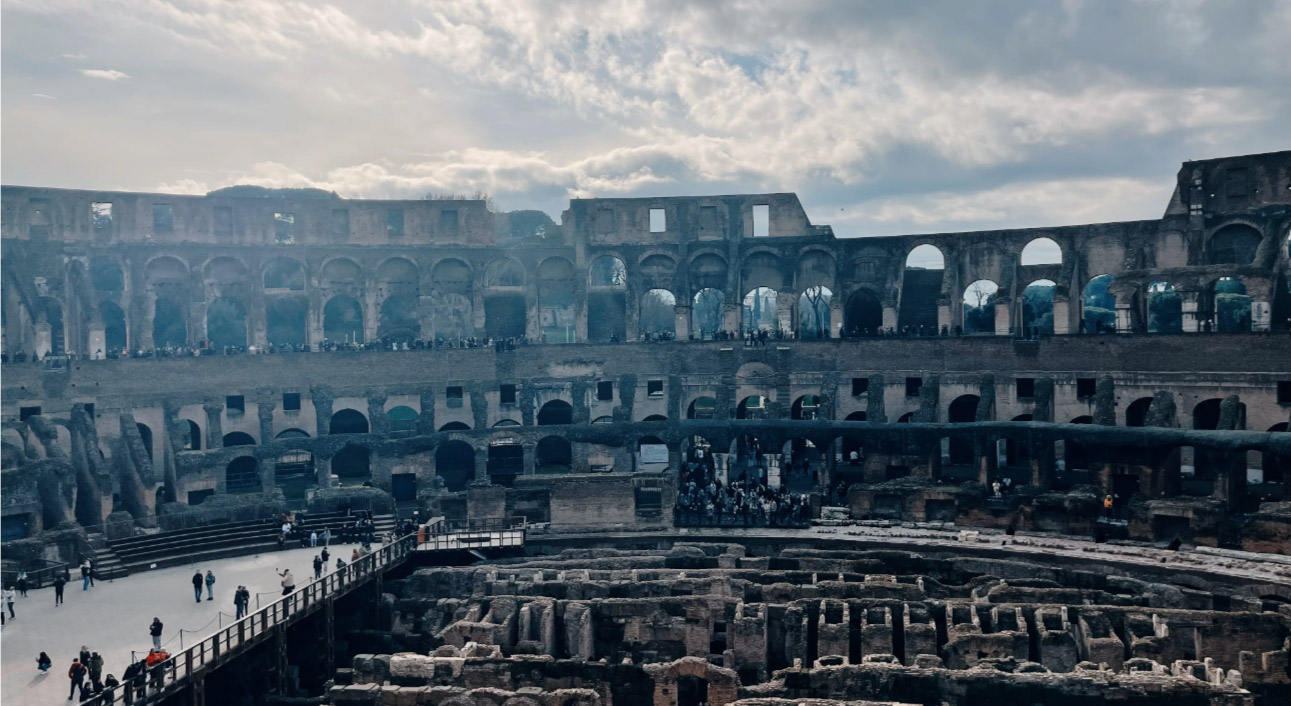
Rome: Ancient and Modern Storytelling
Follow Linfield students on their 2023 Jan Term journey through Greece and Italy.

Follow Linfield students on their 2023 Jan Term journey through Greece and Italy.
This post originally published on Medium by Kelsey Jordan '23 with photo and outlining collaboration from Katelynn Harris '23 and Rachell McCann '25 during the 2023 January Term course through Greece and Italy (THTR/JAMS 398).
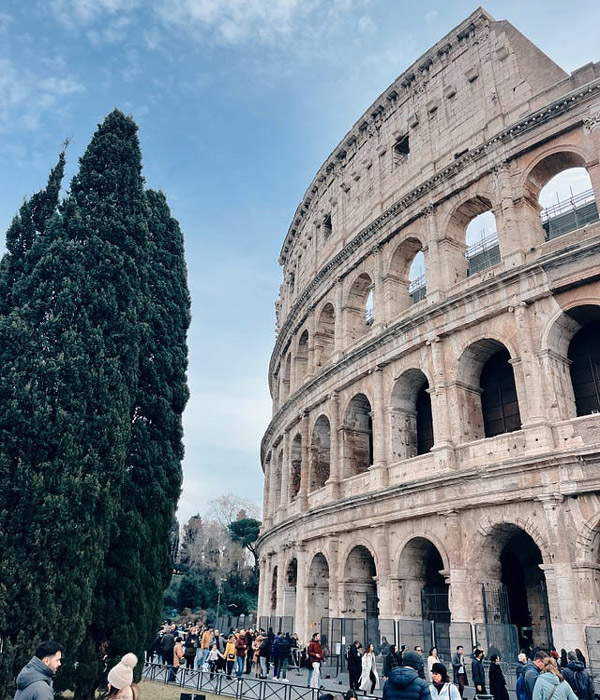 After a hop, skip and a boat ride away (actually just a short plane ride but let’s allow some whimsy here), we ended up in the capital city of Italy: Rome.
After a hop, skip and a boat ride away (actually just a short plane ride but let’s allow some whimsy here), we ended up in the capital city of Italy: Rome.
While we had just come from a fairly large city, somehow Rome felt more, I suppose, “city-like.” It felt larger and busier, and that life was just moving at a faster pace. It took a bit to acclimate to the new climate, but we only had so long until we found ourselves at the famed Colosseum.
According to the wall of signs separating the modern streets from the ancient giant, the original pieces of the structure (to be added upon at later dates) were constructed around 80 CE. Travel back a couple thousand years with us and imagine walking the cobbled streets of the already fairly old Roman Empire. It’s been a difficult stretch of time for your country, and the strain of an unstable government has trickled down into the lives of the people. The Year of the Four Emperors,69 CE, where in the span of a year’s time due to civil war and political turmoil, four emperors were throned and subsequently dethroned: Galba, Otho, Vitellius, and finally, Vespasian, who would reign supreme for the next decade.
But there’s excitement in the air. It’s 75 CE and the Emperor’s project in the heart of Rome is almost finished. The Flavian Amphitheater (the Colosseum) is truly beginning to take shape, and in the people’s hearts is the same hope of their emperor: that this great architectural show of power will revitalize Rome.
And that it did. The Colosseum became an entertainment venue where wealthy ancient Romans could come and watch gladiator fights, naval battles, animal hunts, animal fights, and where modern-day Romans often hear Gladiator (2000) fans shouting: “Are you not entertained!?”
The Linfield team was able to tour the mighty stadium. We were taken by its sheer size, history and artifacts held on display.
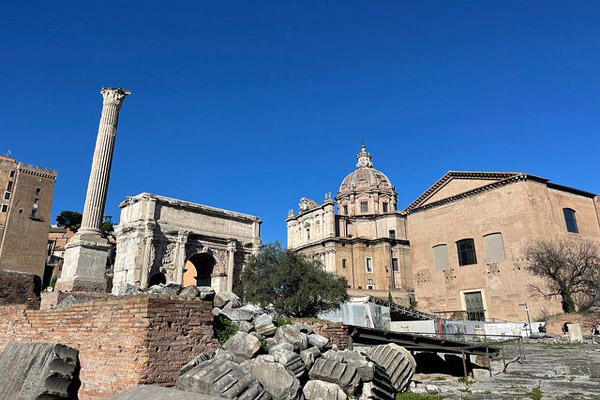 A day later and just adjacent to the Colosseum, the Linfield team explored the Roman Forum. In ancient times, the Forum and the areas surrounding it were the birthplaces of the Roman Senate and Republican governments. There was much to see there, as it was the center of life in this part of Rome for many years with markets, government buildings, the Capitoline Hill and Palatine nearby, the Temple of Vesta, and, my personal favorite, the Imperial Palace of Domitian.
A day later and just adjacent to the Colosseum, the Linfield team explored the Roman Forum. In ancient times, the Forum and the areas surrounding it were the birthplaces of the Roman Senate and Republican governments. There was much to see there, as it was the center of life in this part of Rome for many years with markets, government buildings, the Capitoline Hill and Palatine nearby, the Temple of Vesta, and, my personal favorite, the Imperial Palace of Domitian.
In the pictures, you'll see the incredible Palatine Stadium within the palace that used to house the Emperor’s personal garden where he could take solitary walks, relax, and live MY personal dream of having a garden completely to myself where only I get to walk.
Some other highlights of the trip: on a Saturday many of our group went to the spectacular Vatican City and witnessed Pope Francis giving morning Angelus, after which we traveled to the Capitoline Museum. And then, after all this and much more, we found ourselves in the famous, ruined city of Pompeii.
As I walked through the shockingly well-preserved ruins, a somber feeling settled over me like a long winter shadow. It is a city suspended in time, and while beautiful, the silence, the crooked doors, and the remnants of art still holding defiantly to the walls of rooms, I was reminded of the people who once lived and breathed and conversed there, and the violent end they suffered when Mount Vesuvius erupted in molten rock and flame.
 When we later returned to Rome we had the opportunity to visit the Vatican Museum.
When we later returned to Rome we had the opportunity to visit the Vatican Museum.This may be the largest of the museums we walked. It was full of awe-inspiring relics and, surprisingly, a painting by Van Gogh sequestered away in some random, unimposing room. But perhaps its greatest sight lay at the end of the tour: the Sistine Chapel.
Michelangelo spent a decade of his life on his back, suspended in scaffolding to paint the ceiling of the Sistine Chapel, and what a heavenly experience it is. Craning your neck and spinning in circles just to take it in, you feel as if the sky has opened above you to reveal the heavens and all its inhabitants peeking down at you in all their resplendent glory. No one captured a soul quite like Michelangelo, and the pain between the joints of my neck and spine were inconsequential when standing below one of the greatest masterpieces of humanity.
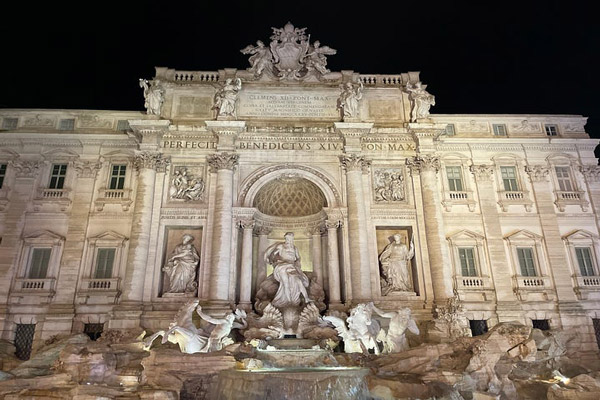 There were too many incredible sights to count or to describe in the number of words they all deserve.
There were too many incredible sights to count or to describe in the number of words they all deserve.
Groups of us went out on our own and saw sights such as the Trevi Fountain, the Pantheon, the President of Italy’s house, the Piazza Nuova, the Altare Della Patria (Altar of the Fatherland), and so many more. While we traveled as a group, we all made our own individual memories that will stay with us long after we have ended our tour of the incredible city of Rome.
But we are on to other adventures now. Now, we are off to Florence.
